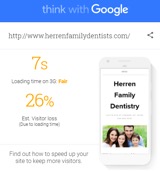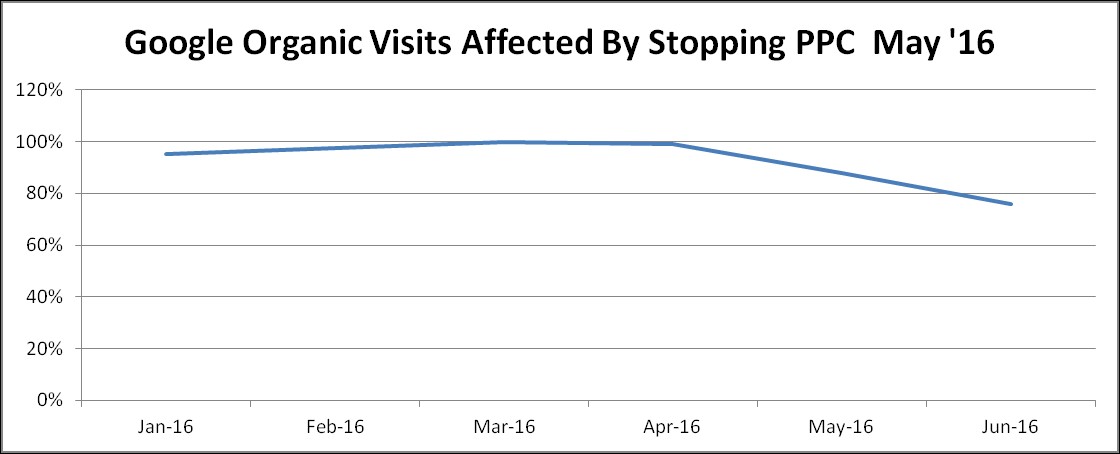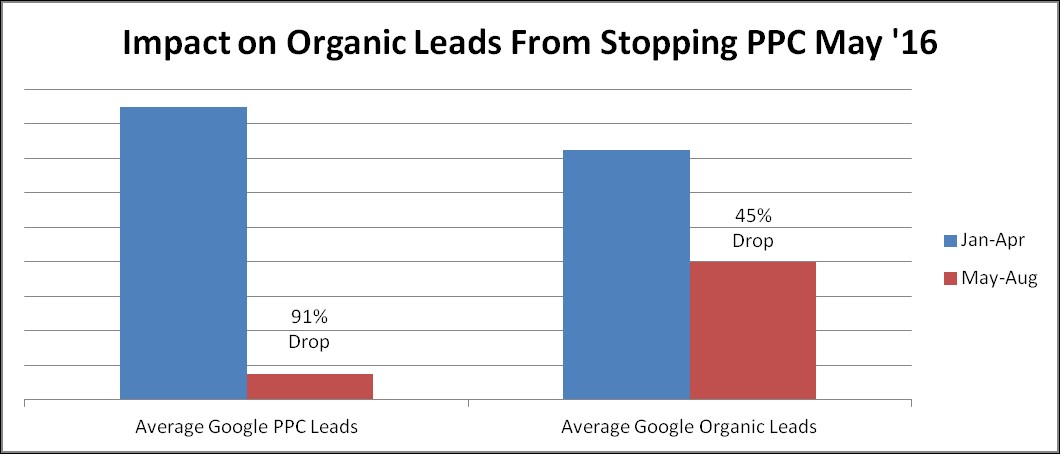In 2015 Google announced that the number of searches from mobile devices (excluding tablets) had surpassed the number of searches from desktop devices.
While that was true overall, it wasn’t the case for the dental industry, yet. Mobile searches for dental terms still lagged behind desktop searches even through 2016.
2017 – The Dental Year of the Smartphone
That changed in 2017. From March to June the winner of the search traffic bounced back and forth between desktop and mobile.
Once July came, mobile searches never looked back. By December 2017, mobile devices were used in 56% of dental searches and desktops were only 38%. The remaining 6% of dental searches were performed on tablets.
If you haven’t yet paid close attention to your mobile website presence, now is the time!
Changes in the Google Indexes
Recognizing this shift, Google created a new search index specifically for mobile devices. If you searched on a desktop, Google would use its desktop index to find the websites most closely matching your search. If you searched on a phone, Google would use its mobile index to find results.
This mobile index considered additional aspects beyond what the desktop index used, such as the user experience with this website on a small screen, the speed of the website, and the available content.
In November 2016, Google announced that they were moving towards a single, mobile-first index. This mobile-first index means that even if you were searching on a desktop, the results would be based on what Google found on their mobile index. This mobile-first index should be fully implemented sometime in 2018.
So What Do You Do as a Dental Practice?
Do a little sleuthing on your own website. Here are five things you can look at to see if your website is ready for mobile consumers.
1. Your website must provide a great user experience on mobile devices.
Just a few, short years ago it was good to have a separate mobile website with stripped down content and few images. That was when mobile phones and data plans were slow.
Now both the phones and the data plans have improved dramatically. People expect to see graphics on their phones and to easily be able to find what they are looking for.
Pull out your phone and look at your website. Is it engaging? Would it be to someone who isn’t a dentist but is looking for one? Can they easily navigate through the site and even search for content? Can they easily contact you and find where your office is located?
2. Visitors to your website need to easily contact you by their preferred method.
Smartphones add additional features to websites. If the website is coded correctly, a visitor can simply touch the phone number to start the call. Or they can simply touch your address to be taken to a map to provide directions.
With our new Click to Text tool, you can now even allow people to text you from your website! You can receive and respond to texts through a screen on your desktop and continue texting with the potential patient.
As you are on your website on your phone, try touching your phone number or address or even texting from your website. Is it easy? If it isn’t, your potential patients will likely leave your site without contacting you.
3. Your website needs enough content to be found and understood by both real people and the search engines.
There is a constant battle between website designers and Search Engine Optimization (SEO) Specialists. Designers want graphics and very little content. SEO Specialists know that if a website doesn’t have content (especially the home page), the search engines won’t know what your website is about and therefore cannot rank it well in the index.
Starting with your home page, look at each page of your website on your phone. Is there enough content that a person could understand what you are about and what you can offer them? Can people easily scan the content to find what they are looking for? Are paragraphs short enough that a reader typically won’t have to scroll to get through them?
4. Your website needs to be fast!
Part of the user experience is having the website load very quickly. In 2016 Google said that “53% of mobile sites are abandoned if pages take longer than 3 seconds to load.”
Site speed has been a ranking factor for desktop searches since 2010. In January 2018 Google announced that mobile page speed will be a ranking factor in mobile searches. If your site is slow it will have a harder time ranking well for any searches.
How fast is your mobile site? Or even your desktop site? Test it out at https://testmysite.thinkwithgoogle.com/ and https://developers.google.com/speed/pagespeed/insights/.
5. You need to appear at the top of the search results.
With a smaller screen, fewer search results from the search engines are visible on the screen. Typically, the listings at the very top of the page are Pay-per-Click (PPC) ads. Depending on the size of the screen, only 1 or 2 results are visible on the screen and they are ads.
If you are not using PPC ads for your practice, people will have to scroll down the search results to find your practice on their mobile device. After the ads come the map results in Google. Then come the organic, or natural, rankings.
Ranking in the 1st organic position is good, but not as good as it used to be. It now means that 1st position ranking is really the 6th or 7th listing (and a few scrolls) on the page.
Have questions or want help?
Specializing in sourcing new patients for dental practices online using internet search, ProspectaMarketing has developed a unique and thorough approach that provides visibility, financial accountability and ongoing refinement and improvement. To learn more, contact Lane Anderson toll-free at 1-877-322-4440 Ext 101, by email using the form on our Contact Us page, or online at ProspectaMarketing.com.






